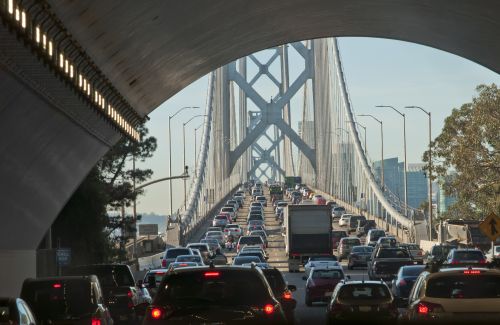California to Ban All Internal Combustion Engine Vehicles by 2035
California to Ban All Internal Combustion Engine Vehicles by 2035

California Governor Gavin Newsom on Wednesday signed an executive order banning all in-state sales of fossil-fueled vehicles by 2035 to help meet the state’s zero-carbon goals and combat the climate change fueling this summer’s heat waves and wildfires.
“In the next 15 years, we will eliminate in California the sales of internal combustion engine” vehicles, Newsom said at a press conference in Sacramento. Doing so will drastically reduce the transportation-sector carbon emissions that now account for 41 percent of the state’s total carbon emissions and are a chief driver of petroleum fuel production that accounts for another 11 percent of that total, he said.
Wednesday’s surprise move is part of Newsom’s promise to boost California’s carbon-reduction policies in the wake of a heat wave that has brought record-high temperatures to the state and fueled wildfires that have burned more than 3.6 million acres and shrouded large parts of the state in health-threatening smoke.
The need for drastic action is “self-evident” to “anyone living out here who is struggling with the heat…struggling with the air quality [and]…struggling with the reality of some 3.6 million acres of this state that has burned,” Newsom said.
Banning fossil-fueled vehicles is also a key step in meeting California’s goal to reduce economywide carbon emissions to zero by 2045, he said. While emissions from electricity generation have been rapidly falling and efforts are underway to shift building heating from natural gas to electricity, transportation emissions have slightly increased over the past few years, he said.
The executive order won’t ban the resale or use of vehicles powered by internal combustion engines in California, Newsom noted. But it will push into overdrive the state’s efforts to electrify its transportation fleet and expand infrastructure for other zero-emissions vehicles such as fuel-cell-powered vehicles.
California has about 726,000 EVs on the road today, accounting for just under half of the country’s total electric vehicle fleet, Newsom said. That’s far from the 5 million called for by 2030 under an executive order from the previous administration of Gov. Jerry Brown. But Newsom pointed to the rapidly falling cost of batteries from automakers like Tesla and the growing numbers of commitments from automakers to build more low-cost EV models as evidence that EVs will reach cost parity with fossil-fueled vehicles by mid-decade.
California utilities are also set to invest more than $1 billion in EV charging infrastructure for cars, buses, trucks and other battery-powered vehicles over the coming years. Southern California Edison this summer received regulator approval to spend $436 million to install 38,000 light-duty EV chargers and $356 million for at least 870 commercial charging stations for medium- and heavy-duty vehicles. Pacific Gas & Electric’s EV charging program will bring 7,500 Level 2 chargers to its territory over the next few years.
Threats from the Trump administration
Newsom praised automakers including Tesla, Ford, Volvo, BMW, Honda and Volkswagen that have agreed to adhere to California’s self-imposed fuel economy and vehicle emissions standards. Those rules are under threat from the Trump administration’s move to roll back nationwide emissions standards and its efforts to bar California and other states from setting their own emissions standards.
Newsom cited this summer’s Advanced Clean Trucks regulation from the California Air Resources Board, which mandates the phased conversion of heavy-duty vehicles to zero-emission models from 2024 to 2045, as establishing the precedent for the executive order’s accelerated timeline for pushing fossil-fueled vehicles from the market.
European countries including France, the U.K. and the Netherlands are committing to zero-emission transportation in the coming decades as well, Newsom noted. “The trends are in the direction of zero-emission vehicles. If you’re an American manufacturer, how can you compete globally unless you’re in that business?”
Newsom’s executive order also takes aim at fossil fuel extraction in the state, but not as aggressively as some are pressing for. The order will set in place a process to consider a ban on natural-gas fracking by 2024; the conclusions are slated to be presented to the state legislature next year. But Newsom declined to ban fracking via executive action, despite calls to do so from environmental groups.









